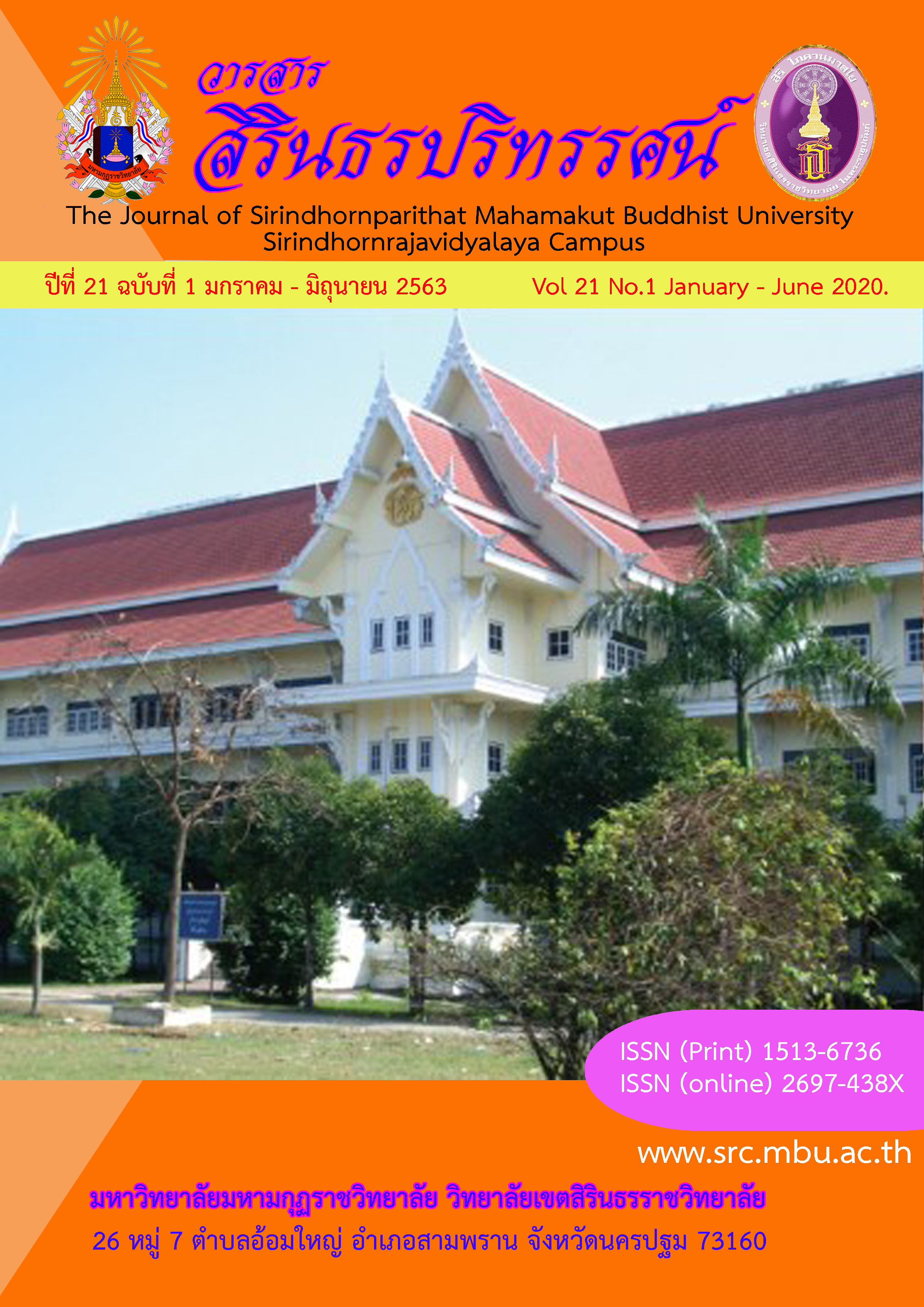Creating happiness in the Buddhism’s Perspective
Keywords:
Creating happiness in the Buddhism’s PerspectiveAbstract
All beings on this planet all desire happiness. Buddhism therefore prescribes happiness as there are many types. happiness is based on ambiance relying on eroticism as the cause of happiness and Niramisuk, not based on ambiguity. Relying on the unknowingly happy or independent happiness. The other type of happiness, physical happiness. Happiness is the heart and the highest of happiness is happiness Nirvana. It is happiness that is independent of time. No object and it is pure happiness without any hidden part or suffering. In order to reach complete happiness must treat happiness correctly meaning that no suffering is to be consumed by oneself not abandoning righteous happiness even in the righteous happiness that he was not obsessed with and diligently caused all the causes of suffering by following the Eight or Threefold Path.
References
เกสร มุ้ยจีน. (2559). การสร้างความสุขด้วยจิตวิทยาเชิงบวก. วารสารวิทยาศาสตร์และเทคโนโลยี.ปีที่ 24 ฉบับที่ 4 (ตุลาคม – ธันวาคม): 675.
พระพรหมคุณาภรณ์ (ป.อ. ปยุตฺโต). (2559). พจนานุกรมพุทธศาสตร์ ฉบับประมวลธรรม. (พิมพ์ครั้งที่ 27). (ชำระเพิ่มเติม ช่วงที่ 1). กรุงเทพฯ: โรงพิมพ์มหาจุฬาลงกรณราชวิทยาลัย.
พระพุทธโฆสเถระ. (2554). คัมภีร์วิสุทธิมรรค. แปลโดย สมเด็จพระพุฒาจารย์ (อาจ อาสภมหาเถร). (พิมพ์ครั้งที่ 10). กรุงเทพฯ: บริษัท ธนาเพรส จำกัด.
มหาจุฬาลงกรณราชวิทยาลัย. (2539). พระไตรปิฎกภาษาไทย ฉบับมหาจุฬาลงกรณราชวิทยาลัย. กรุงเทพฯ : โรงพิมพ์มหาจุฬาลงกรณราชวิทยาลัย.
สำนักงานคณะกรรมการศึกษาขั้นพื้นฐาน. (2552). การพัฒนาคุณภาพการศึกษาของสำนักงานคณะกรรมการการศึกษาขั้นพื้นฐาน. กรุงเทพฯ: โรงพิมพ์คุรุสภา.
สุภาณี สุขะนาคินทร์. (2549). ปัจจัยที่มีความสัมพันธ์กับความสุขของประชาชน อำเภอท่าปลา จังหวัดอุตรดิตถ์. วิทยานิพนธ์ปริญญาโท, มหาวิทยาลัยราชภัฏอุตรดิตถ์.
อภิชัย มงคล และคนอื่น ๆ. (2544). รายงานวิจัยการศึกษาดัชนีชี้วัดความสุขของคนไทย. ขอนแก่น: โรงพิมพ์พระธรรมขันต์.
Layard, R. (2005). Happiness: Lessions from a new science, Couns. Psychot. Res. 6: 302-303.
Manion, J. (2003). Joy at work: Creating a positive workplace, J. Nurs. Admin. 33: 652-655.
Martin, S. (2000). Positive psychology: An introduction, Amer Psychol. 55: 5-14.
Prakke, D. (2005). The Buddhist truth of happiness spirituality and development? The case of governance in Bhutan. Journal of Bhutan Studies, 12(Summer): 119-165.
Ratanakul, Pt. (2004). The Buddhist Concept of Life, Suffering and Death, and Related Bioethical Issues. Eubios Journal of Asian and International Bioethics. 14, 141-146.
Veenhoven, R. (1996). Happy life-expectancy: A comprehensive measure of quality-of-life in nations, Soc. Indicat. Res. 39: 1-58.
Downloads
Published
Issue
Section
License
บทความที่ได้รับการตีพิมพ์เป็นลิขสิทธิ์ของ มหาวิทยาลัยมหามกุฏราชวิทยาลัย วิทยาเขตสิรินธรราชวิทยาลัย
ข้อความที่ปรากฏในบทความแต่ละเรื่องในวารสารวิชาการเล่มนี้เป็นความคิดเห็นส่วนตัวของผู้เขียนแต่ละท่านไม่เกี่ยวข้องกับหาวิทยาลัยมหามกุฏราชวิทยาลัย วิทยาเขตสิรินธรราชวิทยาลัย และคณาจารย์ท่านอื่นๆในมหาวิทยาลัยฯ แต่อย่างใด ความรับผิดชอบองค์ประกอบทั้งหมดของบทความแต่ละเรื่องเป็นของผู้เขียนแต่ละท่าน หากมีความผิดพลาดใดๆ ผู้เขียนแต่ละท่านจะรับผิดชอบบทความของตนเองแต่ผู้เดียว




